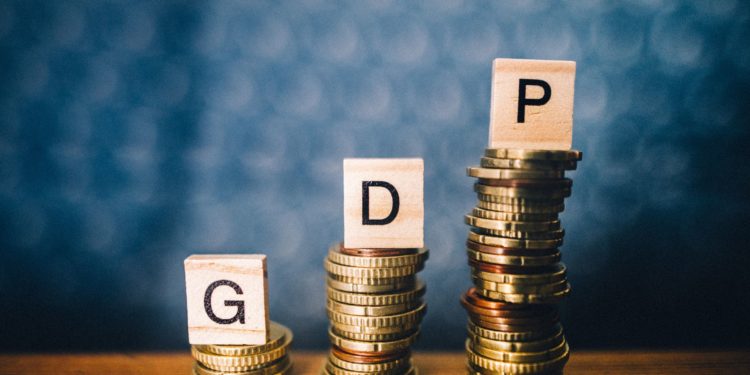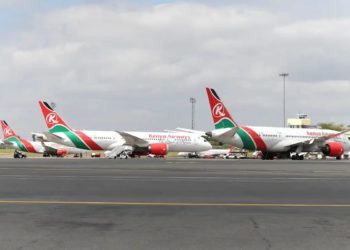Kenya’s economy expanded by 5.0% in the second quarter of 2025, according to the latest Quarterly Gross Domestic Product (GDP) report released by the Kenya National Bureau of Statistics (KNBS). This was an improvement from the 4.6% growth recorded in the same quarter of 2024, showing that the economy is gaining momentum despite headwinds from high taxation, a rising cost of living, and global uncertainties.
The report shows that all major sectors registered positive growth, though the pace varied significantly. Agriculture, forestry and fishing remained the single largest contributor to GDP, accounting for 19.6%, slightly lower than the 19.8% recorded in Q2’2024. Growth in the sector slowed to 4.4% compared to 4.5% last year. The decline was mainly due to lower sugarcane output, which dropped by 44.5%, and weaker tea production, which fell by 5.3%. However, stronger milk deliveries and higher coffee exports cushioned the slowdown, highlighting agriculture’s continued importance to Kenya’s economic structure.
The mining and quarrying sector was the standout performer in Q2’2025, expanding by 15.3%, a sharp reversal from the 5.5% contraction recorded in the same quarter of 2024. Its contribution to GDP increased slightly to 1.0%, underscoring the sector’s growing role as a driver of new growth. Similarly, the construction sector registered a solid recovery, growing by 5.7% compared to a 3.7% contraction in the previous year. Growth in construction was fueled by higher cement consumption, increased imports of bitumen, and a rise in credit extended to construction enterprises, pointing to renewed activity in infrastructure and real estate.
The electricity and water supply sector also posted stronger growth, expanding by 5.7% in Q2’2025 compared to 1.2% a year earlier. The expansion was supported by higher electricity generation, which rose by 15.2% to reach 3,054.9 million kilowatt-hours. Thermal and wind energy sources were the main contributors to this growth, while hydro and solar generation recorded declines. This shift reflects Kenya’s increasing reliance on alternative power sources to meet rising demand.
Transport and storage recorded steady growth of 5.4%, up from 3.4% in Q2’2024, with its GDP share rising to 9.4%. Activity was boosted by a 4.0% increase in port throughput at Mombasa, higher diesel consumption, and growing cargo and passenger volumes on the Standard Gauge Railway. These developments underline the sector’s role as a backbone of trade and logistics.
On the other hand, services-related sectors experienced slower momentum. The accommodation and food services sector grew by 7.8%, a sharp decline from the 35.0% expansion in Q2 2024. Tourist arrivals increased modestly by 3.5%, much lower than the 15.4 % recorded last year, reflecting softer recovery in the hospitality industry. Financial and insurance services also slowed to 6.6%, down from 8.0% in Q2’2024, despite strong equity market performance. The Nairobi Securities Exchange saw traded shares rise by 107.9% and market turnover increase by 140.0%, while the NSE 20 Share Index gained 47.3% year-on-year. Broad money supply also expanded by 8.1%, signaling a more liquid financial system.
Despite the mixed performance across sectors, Kenya’s economy is expected to maintain its positive trajectory. Growth for 2025 is projected between 5.2% and 5.4%, supported by a stronger Kenyan shilling, reduced borrowing costs following multiple interest rate cuts by the Central Bank of Kenya, and favorable rainfall that should sustain agricultural output. Inflation stood at 4.6% in September 2025, within the CBK’s target range, providing room for accommodative monetary policy to continue stimulating investment and consumption.
However, risks remain. Rising taxes and elevated living costs continue to weigh on household purchasing power, while global fuel price volatility poses a threat to import costs and inflation stability. Even so, the outlook for 2025 remains cautiously optimistic, with mining, construction, and energy expected to complement agriculture as key growth engines.
Kenya’s Q2 2025 GDP results highlight a resilient economy in transition. While agriculture continues to anchor overall output, new momentum is emerging from non-traditional sectors such as mining and utilities. As policymakers work to balance growth with fiscal consolidation, the economy’s ability to sustain this momentum will depend on maintaining inflation within target, stabilizing the currency, and supporting private sector investment.
















